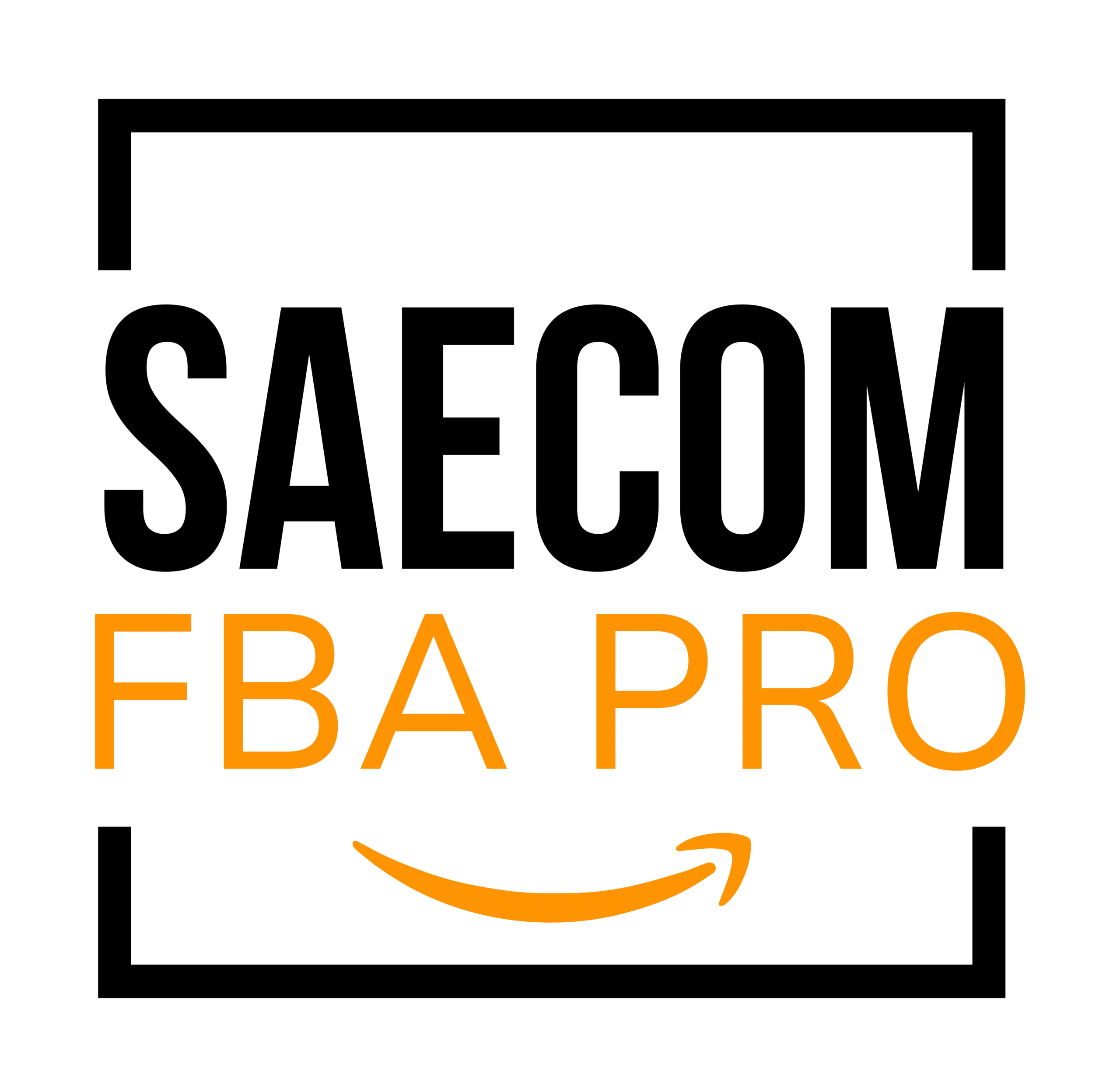Amazon Luxury Stores: A New Era for High-End Fashion
While Amazon is widely known for everyday essentials and lightning-fast shipping, the ecommerce giant is also making a name for itself in the high-end retail world with Amazon Luxury Stores.
But is it realistic to expect designer dresses, iconic handbags, and luxury fragrances to thrive on the same platform where shoppers buy dish soap and batteries?
More importantly, what opportunities or obstacles does this create for smaller sellers? In this article, we’ll explore what Amazon Luxury means for the ecommerce landscape and outline smart strategies for independent sellers aiming to compete with elite designer brands.
What is Amazon Luxury Stores?

Amazon Luxury Stores is an exclusive, invitation-only platform built for both legendary and up-and-coming luxury brands to display their collections while retaining complete control over their brand image, pricing, and content.
The luxury market itself has seen steady growth in recent years. Industry projections show luxury goods are expected to increase by 3.7% annually, reaching $383.3 billion by 2025 and climbing to about $487.6 billion by 2032.
To capture this demand, Amazon launched Luxury Stores in 2020, offering consumers a seamless way to browse and purchase luxury fashion while enjoying features like:
- Editorial-style images
- Immersive videos
- 360-degree product views
A landmark moment arrived in 2025 when Amazon introduced Saks on Amazon, a dedicated designer storefront under the Amazon Fashion umbrella.
This partnership gave Amazon shoppers direct access to Saks Fifth Avenue’s curated designer collections while allowing Saks to retain control over the customer experience.
How Does Amazon Luxury Work?
At its heart, Amazon Luxury Stores function like a virtual extension of a designer’s boutique — only backed by Amazon’s world-class logistics network and global audience.
Participating luxury brands on Amazon enjoy complete authority over how their storefront appears and operates. They don’t need to conform to the platform’s typical product listings. Instead, they’re equipped to:
- Design customized storefronts
- Select which collections to highlight
- Set their own pricing
- Handle inventory management independently
These storefronts focus on curation rather than simple selling, offering an immersive brand experience through:
- Autoplay videos
- Interactive digital lookbooks
- Detailed, designer-caliber product pages
Since Amazon requires strict vetting and offers an invite-only environment for Luxury Stores, the platform ensures a secure space free from counterfeit goods — a critical concern in the luxury fashion world.
For context, U.S. authorities seized $1.3 billion worth of counterfeit products in 2020, with more than half being luxury items like jewelry, watches, and handbags.
Beyond authenticity, Amazon Luxury provides fast, reliable shipping and polished customer service, elevating the overall luxury shopping experience.
Why are Luxury Brands Joining Amazon?

Luxury brands are increasingly choosing Amazon as a retail partner for several strategic reasons:
- Full Brand Control: Amazon Luxury Stores let brands design bespoke product pages and storefront layouts, ensuring their luxury aesthetic remains intact.
- Reliable Fulfillment & Returns: With Amazon’s robust fulfillment network, luxury products can reach customers within one to two days, paired with hassle-free return options.
- Enhanced Counterfeit Protection: Amazon’s Project Zero program enables brands to detect and remove unauthorized listings, which is a valuable tool for labels long plagued by knockoffs.
- Advanced Data Insights: Amazon offers sophisticated analytics tools that give luxury brands insights into customer preferences, inventory trends, and pricing performance in real time.
- Access to a Global Luxury Audience: In 2024, Amazon generated $438 billion in net sales, making it one of the largest and most active ecommerce platforms worldwide.
This combination of operational efficiency and exposure to affluent, convenience-driven shoppers makes Amazon an attractive venue for luxury labels.
How Brands Can Use Amazon to Sell Luxury Fashion
To succeed within Amazon Luxury, high-end brands should take a few key steps:
- Apply for Amazon Luxury Stores: Admission is invite-only. Once accepted, brands can set up their own custom storefronts that mirror the sophistication of their personal ecommerce sites.
- Curate a Branded Digital Experience: Upload custom videos, visuals, and editorial content to craft a visually compelling storefront that’s entirely brand-managed.
- Tap Into Amazon Prime Luxury Shopping: Products within Luxury Stores are eligible for Prime benefits like fast delivery, exclusive access, and a smooth checkout process.
- Use Amazon Brand Analytics: With tools like Brand Analytics, luxury sellers can test messaging, monitor customer behavior, and fine-tune their market positioning for optimal results.
- Ensure Product Protection: Amazon’s Project Zero and serialization features help luxury brands maintain control by swiftly identifying and removing counterfeit listings.
Seller Strategies to Compete with Big High-End Retailers

Selling luxury fashion in a space occupied by the likes of Oscar de la Renta and Balmain may seem daunting — but independent sellers can still carve out a niche. Here’s how:
Create a Premium Product Experience
You don’t have to be a legacy designer label to impress shoppers. Packaging, imagery, and thoughtful customer care can build a high-end brand image.
For instance, an independent leather accessories label can use luxe packaging, handwritten thank-you notes, and custom tissue paper to give buyers a boutique-style unboxing experience.
Pro Tip: Make every touchpoint — from product photos to delivery packaging — a reflection of your premium brand identity.
Leverage Prime Luxury Shopping Perks
Fast, reliable delivery matters in the luxury world. Offering Prime-eligible products ensures quick shipping and enhanced customer confidence.
For example, an independent jewelry brand could use Amazon FBA to guarantee next-day delivery and benefit from the credibility of the Prime badge.
Pro Tip: Enroll your luxury items in FBA for fast delivery, easier returns, and a Prime badge that can improve conversion rates.
Craft a Compelling Brand Story
In a market crowded with household designer names, a meaningful brand narrative can set you apart. Focus on your brand’s history, craftsmanship, or ethical values to create a deeper connection.
A handmade scarf brand, for example, could spotlight its dedication. Such as to heritage craftsmanship and sustainable materials through its product pages and enhanced brand content.
Pro Tip: Use your A+ Content to tell your brand story. Buyers increasingly choose brands based on values, not just logos.
Secure Your Brand Through Trademark Registry
Protect your brand identity by enrolling in the Amazon Brand Registry. This unlocks tools to report infringers, prevent unauthorized listings, and maintain consistent brand standards.
Pro Tip: Partner with experts like SAECOM FBA Pro, who specialize in Amazon marketplace strategy. They can guide you through brand protection, store optimization, and scaling up within the highly competitive luxury sector.
Is Amazon Luxury the Future of High-End Shopping?
The arrival of Amazon Luxury signals a shift in how modern consumers shop for high-end fashion. What was once reserved for glossy boutiques and private showrooms. That is now available with the convenience and trust of Amazon’s platform.
For sellers, this represents both a challenge and an opportunity. To elevate their brand experience and compete directly with designer fashion houses.
Whether you’re a rising boutique designer or a niche luxury brand looking to expand globally. Amazon now provides the infrastructure to deliver a premium, high-value experience to a worldwide audience.


